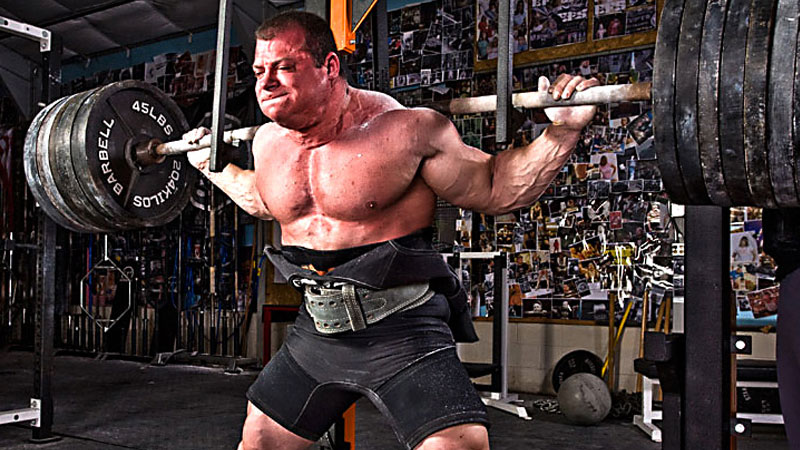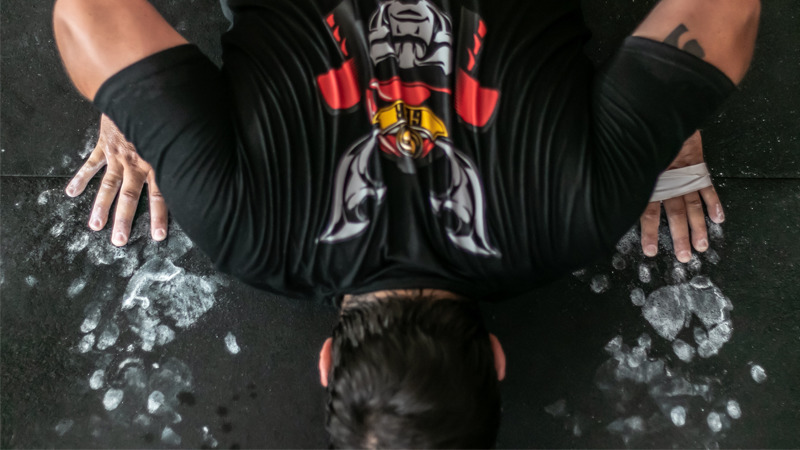
Have you ever wondered why that little runt of a dude in the gym can lift more than you? Or why the jacked dude can’t even bench his own weight but still carries 19 inch arms around?
Understanding the neuromuscular adaptations to strength training helps to improve the way you train. It makes strength workouts more productive and it helps you realize that muscle mass and force production aren’t always related.
If you’re ready to take a little trip into the deep, dark territory of neurophysiology you’d better pop on your lab coat, clean the lenses of your glasses and go balls deep in the science…
Neuromuscular science for bros: 101
Where better place to start than some science. Now, we get it. Some of you might be halfway through a nerdgasm at the thought of a big bit of learning.
Others might have their fingers hovering right over the close button of their devices right now.
But either way. If you’re truly serious about making gains in the weights room you need to read this.
Strength depends on more than just your mucles
When you start a strength training plan you start a cascade of changes in your body that are regulated by your brain.
Let’s take a simple exercise like the bicep curl for example.
When you lift a weight, the muscle fibers of your bicep need to contract and shorten in order to move your lower arm against the resistance of the weight.
To do this, your brain (the master computer) has to fire electrical messages down your spine (which is a bit like a electrical super highway). From there, these electrical impulses arrive at what’s called a motor unit.
This is essentially a mini-brain that is responsible for telling muscle fibers to contract or not. They are made up of a single nerve cell and then a bunch of muscle fibers.
Once triggered, a motor unit will automatically contract all of the fibers that attach to it.
Strength training triggers more motor units
Motor units come in all shapes and sizes. If they’re attached to muscles that don’t need to generate large amounts of force (your eye lids for example), they have only a few muscle fibers attached to them.
If they are needed for big, strong movements (your quads and calves are good examples) you’ll find that the motor unit is larger and has thousands of muscle fibers attached to it.
When you lift a heavy weight, your brain sends signals as fast as it can to the motor units in your biceps (or chest or legs of wherever its needed). From here, the more motor units that are triggered, the more muscle fibers are contracted.
If you lift a light weight, your brain will only ask a few motor units (and therefore a few muscle fibers) to activate. If you’re picking up a protein shaker for example, you really don’t need the whole of your bicep to contract – that’s be stupid (but fun to watch).
But if your brain feels that whatever you’re lifting is heavy and there aren’t enough motor units involved, it’ll activate more. It’ll continue to do this until it has the right amount needed to lift the weight.
Henneman’s size principle
As you can imagine, there’s a fair amount of research conducted on this stuff. Up and down the world are multiple professor Frink-like lab nerds testing athletes, just to see what happens during neuromuscualr adaptations to strength training.
Henneman’s size principle suggests that when a muscle contracts, your smaller, weaker motor units are triggered first. And as you smash through the reps, your larger ones kick in. The recruitment is based on the intensity of the exercise.
So, heavy strength training will trigger the larger motor units and therefore more muscle fibers. While little pussy weights will only activate a few small ones.
For the record, this principle is only a theory. But for what we’re after, it makes complete sense.

Regular strength training leads to neuromuscular efficiency
The reason why you get stronger after a few weeks of training is really down to two things. Either your muscles are now bigger, or neuromuscular adaptations to strength training have occurred.
If you think back to when you started training you might remember the fact that you got stronger pretty fast. Well before your muscles had chance to grow.
So why exactly did you get stronger?
Well, it’s all down to the neuromuscular adaptations to strength training.
Strength training and the ability to increase force in your muscle fibers is all about what happens to those electrical messages.
The more you ‘train’ a motor unit, the better it gets. And this of course will lead to improvements in strength because of what’s known as better ‘intra-muscular recruitment’.
And that comes down to two important reasons.
- Rate coding
- Motor unit synchronization
Rate coding refers to the rate or speed at which the brain can switch on motor units. The faster the rate coding, the quicker a muscle can produce force without fatigue.
Motor unit synchronization is more to do with the result of multiple motor units recruiting simultaneously. This is important as even without an increase in muscle size, strength increases when these two factors become more efficient with weightlifting.
Neuromuscular adaptations to strength training occur simply because your brain learns how to fire stronger and faster nerve impulses to your muscle fibers, helping them to produce greater force and overcome heavier loads over time.
Short term strength improvements are usually due to neuromuscular adaptations
If you smash your way through a training cycle and find that you’ve improved in strength, chances are its not due to an increase in pure slabs of muscle.
When short term programming over 4-8 weeks sees you lifting higher rep maxes, those improvements are purely down to neural adaptations.

You don’t need to be jacked to lift heavy
Let’s put all of this together.
Because force generation and strength are based around things like rate coding and nervous system efficiency, you can definitely get stronger without adding mass.
If you take part in sports where you need to be as strong but as light as possible (for example gymnastics, weightlifting and running for example) training for strength without mass is more than achievable.
Here’s how:
- Lift heavy 3-6 reps per set
- Keep volume low
- Lift powerfully and explosively
- Plenty of rest time between sets
- Focus on compound exercises
Summary – Understanding the Neuromuscular Adaptations to Strength Training
The brain is a funny old thing. Treat it well and train the right way and you’ll teach it how to become more efficient.
The neuromuscular adaptations to strength training don;t involve increases in huge mass or any other structural changes inside the muscle.
They involve things like motor unit synchronicity and improved rate coding.






